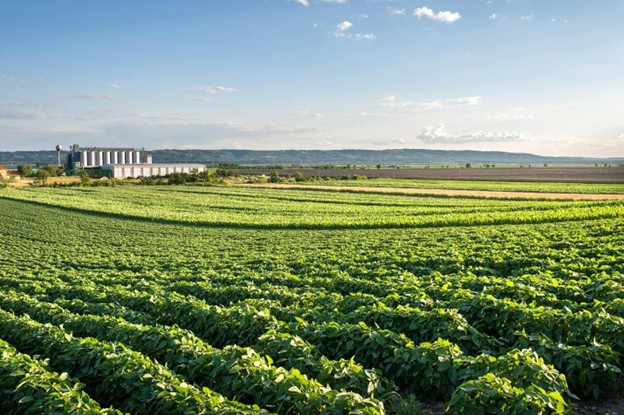
Hailing as South East Asia’s largest tyre manufacturing plant
All the infrastructure of Stage 1 of what is tipped to be the largest, fully integrated tyre manufacturing plant in the whole of Southeast Asia, the Rigid Tyre Corporation Limited plant in the Wagawatta BOI industrial Zone, is fast nearing completion for commissioning in early 2020, and the systematic and thematic greening of the premises has begun. The thumb upon this project belongs to none other than Mr. Nandana Lokuwithana – entrepreneur and environmentalist.

Just as you enter what is earmarked to be the R&D Division, a two storied building, one is greeted by a yellow clump of bamboo planted under the patio. Just for decoration, I would think, had I not asked, ‘why bamboo?’ from engineer cum self-taught horticulturist, Vidura.
“This tyre company, he began, ‘as well as our parent company, LANWA, pays great attention to the understanding, refining and testing of mechanical properties of material. ‘when it comes to industrial applications, natural fibers in reinforcing composite material, Bamboo,’, he chuckled, ‘is a superlative showcase for renewability, biodegradability, recyclability, and sustainability”. The very attributes that the twin companies, under stewardship of Chairman Lokuwithana, strive for in our operations as well. So, it is all but natural for this symbolic selection: a clump of bamboo, so pleasingly packaged into an architectural beauty, to greet the visitor to our R&D Division!
In that very instant I knew I was dealing with a refined class of material who was going about the ‘greening project’ with an idiom intrinsic to them.

When I happened to see a wooden stump, as dead as a doornail, purposefully planted on the banks of a waterway, and a week or two later when I saw a tiny shoot of life peeking out into the life-giving sunlight, that’s what got me started into looking for its ‘resuscitator’!
That is when I met Vidura and his senior Nihal, Consultant to the greening of the factory complex.
Holding back nothing, they then went on to share tomes of botany, horticulture, agronomy, ecology, traditional insights and their scientific interpretations –extrapolating what is known as Landscape Architecture –and, finally, the drive and direction of their project.

Landscape architecture is a discipline that works with all types of structures and external spaces and with ‘hard’ (built) and ‘soft’(planted) materials. In this case, all the infrastructure connected with the tyre production plant and the greenery that they envisage to plant.
Although their aims may be lofty, the real challenge was the bare, barren terra firma on which they were to operate! Even when much of the area was taken up by the built environment of the production facility, yet the trimmings of a 150-acre plot of land left for the ‘greening project’ is substantial.

Substantial may be but in substance the land is poor. For all the soil conditioning, nutrient enrichments and the chemical makeup of the soil accumulated over the millennia were cut into, deep down and all of it bulldozed away. And now to convert what was left as bare, barren land; to recondition and to revitalize; so that it will befit plant life, is a challenge, but what is even more daunting is the task of sourcing the diversity of plants needed for the greening of the site. That is when a clear understanding of an architectural idiom comes in handy.

That idiom was present in every plant and every grove the ‘Green Project’ managed. Apart from environmental relevance, the cornucopia of plants was chosen after careful consideration of multiple attributes. Murutha for their lavender bloom; Jacaranda for their symbolism of wisdom, wealth and prosperity; Bridal veil for their draping foliage filled vines. Plenty others were selected for their longevity, imposing stature or for their crown shape or brachiating architecture. This multi-layered selection process did not end there. A plant’s rarity, endemism, cultural significance, national importance, or their traditional symbolism or ayurvedic panacea were also considered in the planting programme. Then there was greenery that was chosen purely on functionality; as sound mufflers, particle screens or physical barriers.

The planting programme, working towards their floral makeup, made the Rigid Tyres land a repository for any plant that had the misfortune of being uprooted due to urban development. Old and young trees were root balled and relocated, as appropriate, in the factory premises. That plant rescuing mission had an instant appeal from the local community and went on to create a healthy symbiotic relationship with the ‘tree donors’ through knowledge sharing of modern horticultural practices. so that, intern they, too, could be champions in the cause of preserving nature in their own way.

All in all, the greening project at Rigid Tyre Plant was striving to create an arboretum with a well-defined architectural idiom that was aesthetically appealing, environmentally sustaining and socially binding. Augments well with Rigid Tyre Corporation’s corporate premise: To fast-forward Sri Lanka Socially, Economically and Industrially.
An unarguable premise when Rigid Tyres would hail as South East Asia’s largest tyre manufacturing plant, once commissioned in 2020, and when manufacture is in full gear!

All in all, the greening project at the Rigid Tyre plant was striving to create an arboretum with a well-defined architectural idiom that was aesthetically appealing, environmentally sustainable and socially binding- thus augmenting well with Rigid Tyre Corporation’s promise: To fast-forward Sri Lanka Socially, Economically and Industrially.
A promise that has been carefully curated by Mr. Nandana Lokuwithana and his team considering the fact that the Rigid Tyre complex would hail as South East Asia’s largest tyre manufacturing plant, once commissioned in 2020, and when manufacture is in full gear!



